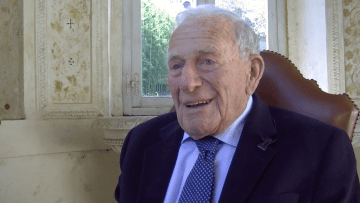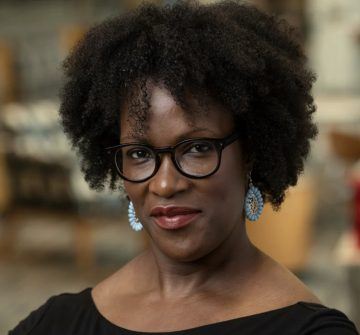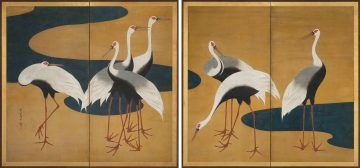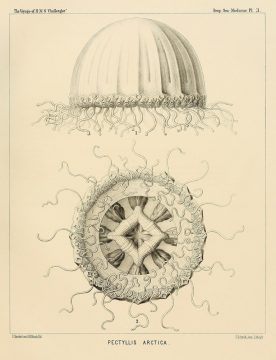Philip Ball in Nature:
 As scientists work to create a vaccine against COVID-19, a small but fervent anti-vaccination movement is marshalling against it. Campaigners are seeding outlandish narratives: they falsely say that coronavirus vaccines will be used to implant microchips into people, for instance, and falsely claim that a woman who took part in a UK vaccine trial died. In April, some carried placards with anti-vaccine slogans at rallies in California to protest against the lockdown. Last week, a now-deleted YouTube video promoting wild conspiracy theories about the pandemic and asserting (without evidence) that vaccines would “kill millions” received more than 8 million views.
As scientists work to create a vaccine against COVID-19, a small but fervent anti-vaccination movement is marshalling against it. Campaigners are seeding outlandish narratives: they falsely say that coronavirus vaccines will be used to implant microchips into people, for instance, and falsely claim that a woman who took part in a UK vaccine trial died. In April, some carried placards with anti-vaccine slogans at rallies in California to protest against the lockdown. Last week, a now-deleted YouTube video promoting wild conspiracy theories about the pandemic and asserting (without evidence) that vaccines would “kill millions” received more than 8 million views.
It’s not known how many people would actually refuse a COVID-19 vaccine — and general support for vaccines remains high. But some researchers studying vaccine-opposition movements say they’re concerned that the messages could undermine efforts to establish herd immunity to the new coronavirus. Online opposition to vaccines has rapidly pivoted to talk of the pandemic, says Neil Johnson, a physicist at George Washington University in Washington DC, who is studying the campaigners’ tactics. “For a lot of these groups, it’s all about COVID now,” he says.
More here.

 When Dwight D. Eisenhower was planning the invasion of Normandy, he made sure to check with Walter Munk and his colleagues first. Munk had come to the United States from Austria-Hungary to work as a banker before switching to oceanography, eventually making major advances in the science of tidal and wave forecasting. He was a defense researcher at the Scripps Institution of Oceanography in 1944 when his team calculated that the seas on June 5 of that year would be so rough that a delay was in order. The invasion would happen on the following day.
When Dwight D. Eisenhower was planning the invasion of Normandy, he made sure to check with Walter Munk and his colleagues first. Munk had come to the United States from Austria-Hungary to work as a banker before switching to oceanography, eventually making major advances in the science of tidal and wave forecasting. He was a defense researcher at the Scripps Institution of Oceanography in 1944 when his team calculated that the seas on June 5 of that year would be so rough that a delay was in order. The invasion would happen on the following day. Hutchins was coming off of an epic, exhausting week at Defcon, one of the world’s largest hacker conferences, where he had been celebrated as a hero. Less than three months earlier, Hutchins had saved the internet from what was, at the time, the worst cyberattack in history: a piece of
Hutchins was coming off of an epic, exhausting week at Defcon, one of the world’s largest hacker conferences, where he had been celebrated as a hero. Less than three months earlier, Hutchins had saved the internet from what was, at the time, the worst cyberattack in history: a piece of  If you go to Wendy’s this week, there’s a good chance you
If you go to Wendy’s this week, there’s a good chance you  It’s not often that a paper attempts to take down an entire field. Yet, this past January, that’s precisely what University of New Hampshire assistant philosophy professor Subrena Smith’s
It’s not often that a paper attempts to take down an entire field. Yet, this past January, that’s precisely what University of New Hampshire assistant philosophy professor Subrena Smith’s  In Southern California, early health seekers embraced the sunshine, fresh air, and opportunity to sleep outdoors. To reap the benefits of particular microclimates, they often lived somewhat nomadically, circulating between various hotels, boarding houses, or crudely erected tent cities. Some traveled by horse-drawn house wagon, wandering the desert to take air and sun baths. A family in Pasadena pitched a carpet over tree branches and lived beneath the peaked shelter for six weeks. An ill Massachusetts man roamed the bucolic Ojai Valley with a cow, subsisting only on its raw milk until he claimed a miraculous recovery.
In Southern California, early health seekers embraced the sunshine, fresh air, and opportunity to sleep outdoors. To reap the benefits of particular microclimates, they often lived somewhat nomadically, circulating between various hotels, boarding houses, or crudely erected tent cities. Some traveled by horse-drawn house wagon, wandering the desert to take air and sun baths. A family in Pasadena pitched a carpet over tree branches and lived beneath the peaked shelter for six weeks. An ill Massachusetts man roamed the bucolic Ojai Valley with a cow, subsisting only on its raw milk until he claimed a miraculous recovery. You will have seen art from the Edo Period—its most recognizable images are the ukiyo-e prints: mass-produced woodblock scenes of popular entertainment and Japanese landscapes, the most world-famous of which is Katushika Hokusai’s The Great Wave off Kanagawa from 1829. These prints were ubiquitous, disseminated through the city’s pleasure quarters, and sold, it’s colloquially said, as cheaply as a second helping of noodles. And before Edo Japan opened up to the world and these inexpensive prints were splashed all over Europe, they were bought almost exclusively as souvenirs by a growing Japanese middle class, a pictorial keepsake of insular pride. The Great Wave is itself an amalgam of some of Japan’s most distinctive characteristics, illustrating its relationship with the spiritual anchor of Mount Fuji, and with the sea itself, which is embodied in both the quotidian economics of the fishing industry, and in the Buddhist philosophy of a wave’s impermanence.
You will have seen art from the Edo Period—its most recognizable images are the ukiyo-e prints: mass-produced woodblock scenes of popular entertainment and Japanese landscapes, the most world-famous of which is Katushika Hokusai’s The Great Wave off Kanagawa from 1829. These prints were ubiquitous, disseminated through the city’s pleasure quarters, and sold, it’s colloquially said, as cheaply as a second helping of noodles. And before Edo Japan opened up to the world and these inexpensive prints were splashed all over Europe, they were bought almost exclusively as souvenirs by a growing Japanese middle class, a pictorial keepsake of insular pride. The Great Wave is itself an amalgam of some of Japan’s most distinctive characteristics, illustrating its relationship with the spiritual anchor of Mount Fuji, and with the sea itself, which is embodied in both the quotidian economics of the fishing industry, and in the Buddhist philosophy of a wave’s impermanence. THE FIRST PERSON YOU MEET
THE FIRST PERSON YOU MEET  Before
Before  For centuries western culture has been permeated by the idea that humans are selfish creatures. That cynical image of humanity has been proclaimed in films and novels, history books and scientific research. But in the last 20 years, something extraordinary has happened. Scientists from all over the world have switched to a more hopeful view of mankind. This development is still so young that researchers in different fields often don’t even know about each other.
For centuries western culture has been permeated by the idea that humans are selfish creatures. That cynical image of humanity has been proclaimed in films and novels, history books and scientific research. But in the last 20 years, something extraordinary has happened. Scientists from all over the world have switched to a more hopeful view of mankind. This development is still so young that researchers in different fields often don’t even know about each other. On a crisp afternoon, four cyclists pedaled mountain bikes along the serpentine two-lane byway on the southern shores of
On a crisp afternoon, four cyclists pedaled mountain bikes along the serpentine two-lane byway on the southern shores of  The past few centuries of scientific progress have displaced humanity from the center of it all: the Earth is not at the middle of the Solar System, the Sun is but one star in a large galaxy, there are trillions of galaxies, and so on. Now we know that we’re not even made of the same stuff as most of the universe; for every amount of ordinary atoms and other known particles, there is five times as much dark matter, some kind of stuff we haven’t identified in laboratory experiments. But we do know a great deal about the behavior of dark matter. I talk with Lina Necib about why we think there’s dark matter, what it might be, and how it’s distributed in the galaxy. The latter question has seen enormous recent progress, especially from high-precision measurements of the distribution of stars in the Milky Way.
The past few centuries of scientific progress have displaced humanity from the center of it all: the Earth is not at the middle of the Solar System, the Sun is but one star in a large galaxy, there are trillions of galaxies, and so on. Now we know that we’re not even made of the same stuff as most of the universe; for every amount of ordinary atoms and other known particles, there is five times as much dark matter, some kind of stuff we haven’t identified in laboratory experiments. But we do know a great deal about the behavior of dark matter. I talk with Lina Necib about why we think there’s dark matter, what it might be, and how it’s distributed in the galaxy. The latter question has seen enormous recent progress, especially from high-precision measurements of the distribution of stars in the Milky Way. This is a good moment, then, for the Belgian architect Jean Dethier to release a 512-page survey chronicling earth construction from prehistory onwards across five continents. Proportioned and priced as a coffee table filler, the book is in fact ferociously polemical. Within pages, Dethier is raging against the climate-wrecking paradigm of contemporary construction: ‘The excessive use of industrialized building materials, often under the pretext of rationality, is one of the main causes of climate change.’ He argues that ‘prevailing building practices of today are often exploitative and dangerous, forced upon us by a lobby of multinational manufacturers of industrialized materials that have come to dominate our lives’.
This is a good moment, then, for the Belgian architect Jean Dethier to release a 512-page survey chronicling earth construction from prehistory onwards across five continents. Proportioned and priced as a coffee table filler, the book is in fact ferociously polemical. Within pages, Dethier is raging against the climate-wrecking paradigm of contemporary construction: ‘The excessive use of industrialized building materials, often under the pretext of rationality, is one of the main causes of climate change.’ He argues that ‘prevailing building practices of today are often exploitative and dangerous, forced upon us by a lobby of multinational manufacturers of industrialized materials that have come to dominate our lives’. “I hope you are able to work hard on science & thus banish, as far as may be possible, painful remembrances,” Charles Darwin wrote in the spring of 1864 to a young and obscure German correspondent who had just sent him two folios of his
“I hope you are able to work hard on science & thus banish, as far as may be possible, painful remembrances,” Charles Darwin wrote in the spring of 1864 to a young and obscure German correspondent who had just sent him two folios of his